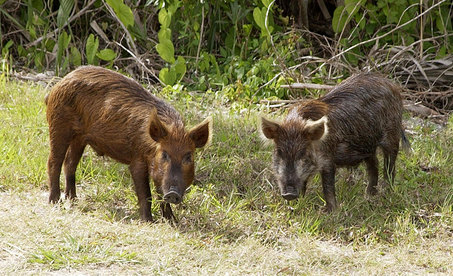Feral hogs are wild swine or wild pigs that are descendents from domestic ancestry. In short, they are the products of domesticated hogs that have gone wild. With each additional generation, the pigs technically become “more wild.” In fact, there are three types of feral hogs found in the United States. These types are feral hogs, Eurasian wild boar (commonly called Russian wild boar), and hybrids between these two types. The hybrid being a cross between a feral hog and the Eurasian/Russian wild boar.
In the United States, Texas, California, and Florida have the highest numbers of wild feral hogs. However, feral hogs are not restricted to the continental U.S. Some of the Hawaiian Islands also have substantial populations as well. Even those these states and many others have populations of feral hogs, these animals are not indigenous (native) to the United States, or North America for that matter.

The feral hog, however, should not be confused with a similiar hog-like animal, the javelina. The javalina, or more appropriately the collared peccary, is native to the southwestern U.S. and is found in Texas, New Mexico, and Arizona. However, the feral hog is from a different species, genus, and family from the javelina, which belongs to the family Tayassuidae.
For hogs, it was probably not until the discovery of the new world by European explorers that swine found there way into the present day U.S. Early explorers such as Hernando Cortes and Hernando de Soto are credited for the introduction of swine into Central and North America. The pigs these explorers brought over were domesticated and it was not until the 1930’s that the Russian wild boar was introduced. Since the domestic hog’s initial introduction and the introduction of the wild boar, these animals have been breeding and cross-breeding in the wild and their populations continue to grow.